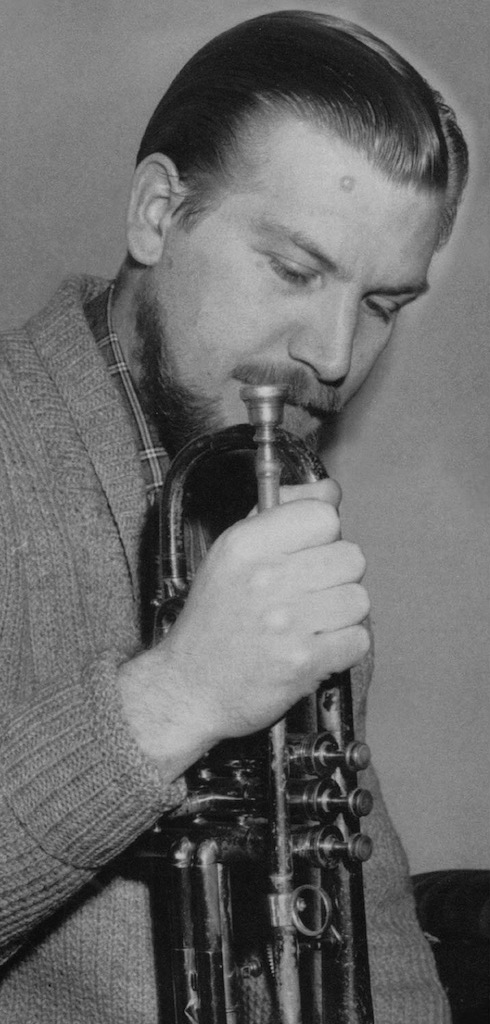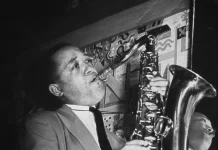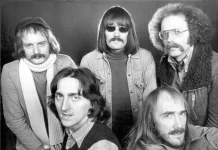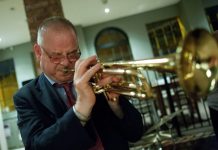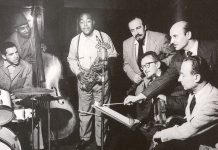The short happy life of West Mon Grammar School’s Jazz Club at Pontypool in the late 1950s seemed to say something about the music it enjoyed: fugitive, conducive to obsession, and initially unaware of Marvin Rainwater.
This was the Welsh industrial valleys, mind, where a jazz band is still thought of as a platoon of majorettes blowing into kazoos
To a West Mon fifth-former in those days, jazz was something his father might have liked but not his mother. For the old man, its high-priest was probably Ted Heath, the bandleader, but he’d have been unaware of Stan Tracey, Heath’s bushel-hidden light as the band’s arranger. This was the Welsh industrial valleys, mind, where a jazz band is still thought of as a platoon of majorettes blowing into kazoos.
Rainwater (It Takes A Whole Lotta Woman) was played at an end-of-term free lesson on a Dansette stacked with 45s, along with music by a game-changer called Elvis Presley and those chasing his shadow. Moderately blues-inspired, Rainwater’s utterances symbolised the flying detritus that heralded the arrival of pop music’s tornado.
While not averse to them, the club sought a more cultural refuge in the geography room – “You can use it, but mind the globes” – where it possessed and played Isle Of Capri by Ken Colyer’s Jazzmen, Bad Penny Blues by the Humphrey Lyttelton Band (flip side Close Your Eyes), and the Chris Barber Band’s Make Me A Pallet On The Floor, sung by Ottilie Patterson. Its members could play “air” piano and bass before the idea caught on 20 years later and before they knew who in the Erroll Garner Trio was responsible for the grunting: those were pre-video times, before jazz musicians appeared much on TV.
Club evenings were a sixth-form activity and short-lived, because (1) the A-level members had just two years to run as school pupils; and (2) potential successors coming up from lower school had been ambushed by pop. The membership was never more than five, one-sixth of the cohort hoping for further education without the hindrance of a peaked cap and blazer. It was too young to have appreciated 1950s “modern” jazz except for Dave Brubeck and other Family Favourites. That said, Count Basie’s April In Paris was often on the radio playlists, suggesting that Heath’s damp-ish squibs were capable of exploding. Well, damp by comparison.
The point of this nostalgia is to make a plea for variety.
The ephemeral West Mon Grammar School Jazz Club in 1960 wobbled on two cusps: its own demise and the inundation of the music it loved by Beatles-led pop music. But its lack of diversity and full testosteronic flow – West Mon was a boys’ school – seemed to tell against it anyway. It needed not only numerically more of the same music but also something different and challenging. (Maybe the town’s all-girls grammar on the other side of the valley could have contributed something.) Club members had access to those only when there was money to spend (university grants) or they left school after A-level exams and started work. Then they could buy jazz records, as well as listen to Willis Conover on Voice of America. How did they get that?
How often do gigging mainstream musicians follow the same formal structures time after time? They needn’t, given a modicum of flair at arranging
In the early 1960s, jazz was holding its own in record shops beyond London while the precursors of pop – Guy Mitchell, Rosemary Clooney, Frankie Vaughan, Alma Cogan et al – were singing the swan songs on which they’d glide into oblivion. Jazz, by definition, cannot help throwing up things new. But that old desideratum – multifariousness – rarely troubled those happy with tired routines. There’s plenty of dead normality around today. How often do gigging mainstream (little “m”) musicians follow the same formal structures time after time? They needn’t, given a modicum of flair at arranging. In theory, a small group of five or six instruments can exploit several musical permutations based on numbers alone.
They can play for longer; subdivide a chart’s formal narrative; feature a drum solo at the start or a fading bass one at the end; reverse the roles of solo instrument and backing; start with a piano prelude and end with a postlude; tear off into the undergrowth and see what happens; let everyone play brief items unaccompanied; perform (if a quartet) once or twice as a twosome or threesome as well as a foursome; let each leave a tune in succession until only one musician’s left, or start with one to be joined by the others.
Some of these are classical-music variants that can be applied to jazz without any loss of its inherent qualities. Don’t just play the changes; ring them too. Given another term to think about it, West Mon’s jazzers might have come up with that. They were a bright bunch.

